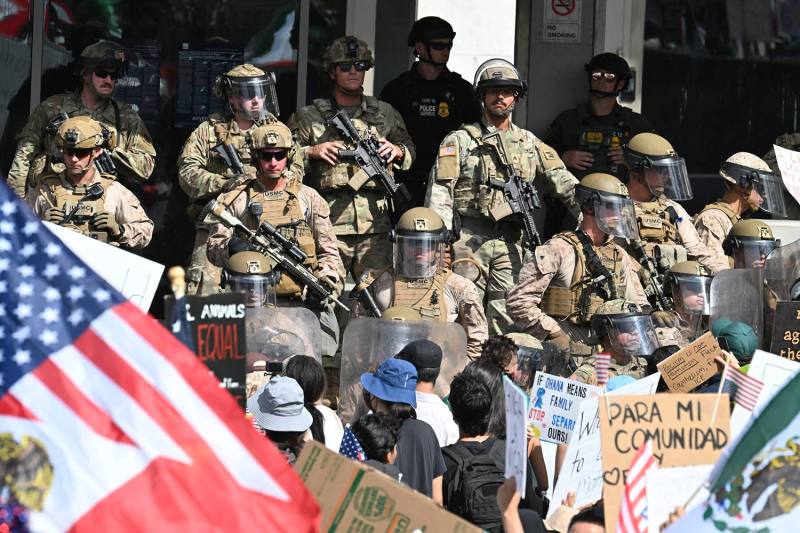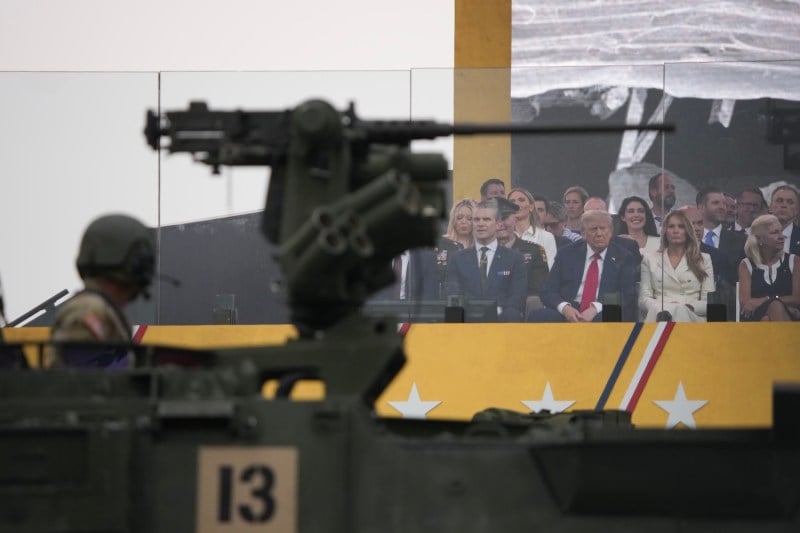Asia’s Autocrats Welcome USAID’s End

Asia’s Autocrats Welcome USAID’s End
Conspiracy theories about U.S. power are now shared by the Trump administration.
Indonesian President Prabowo Subianto attends the commemoration of Pancasila Day at the Pancasila Building within the Ministry of Foreign Affairs compound in Jakarta, Indonesia, on June 2. Yasuyoshi Chiba/AFP via Getty Images
Elon Musk and U.S. President Donald Trump have gutted the U.S. Agency for International Development (USAID), the long-standing U.S. program focused on humanitarian aid. But despite cries of outrage from much of the world, there are many in Asia who are happy to see it gone—and not just in China. Many people in the region, including government leaders, believe that the U.S. sponsorship of the nongovernmental organization ecosystem is in truth a vast conspiracy that could threaten their leadership. It is, they believe, the hidden hand behind protests and dreaded “color revolutions.” Paranoia and projection play a big role in this, but there is also a grain of truth.
Across the world, USAID has helped fight infectious disease, feed the hungry, and respond to natural disasters, among dozens of other worthy causes. But many believed this was cover for something more malign.
Elon Musk and U.S. President Donald Trump have gutted the U.S. Agency for International Development (USAID), the long-standing U.S. program focused on humanitarian aid. But despite cries of outrage from much of the world, there are many in Asia who are happy to see it gone—and not just in China. Many people in the region, including government leaders, believe that the U.S. sponsorship of the nongovernmental organization ecosystem is in truth a vast conspiracy that could threaten their leadership. It is, they believe, the hidden hand behind protests and dreaded “color revolutions.” Paranoia and projection play a big role in this, but there is also a grain of truth.
Across the world, USAID has helped fight infectious disease, feed the hungry, and respond to natural disasters, among dozens of other worthy causes. But many believed this was cover for something more malign.
USAID was one target of the funding cuts carried out by Musk’s Department of Government Efficiency (DOGE), but so were other, more openly ideological U.S. democracy promotion projects. In Cambodia, long-standing autocrat and former Prime Minister Hun Sen, who recently nominally handed power over to his son, posted on Facebook to celebrate the Trump administration’s move to cut off funding to broadcasters such as Radio Free Asia, praising its “courage to lead the world to combat fake news.”
In India, a dubious claim by DOGE that it had canceled a $21 million contract intended to improve voter turnout in India was seized upon by a member the prime minister’s economic advisory council as a sign of something nefarious.
“$21M for voter turnout? This definitely is external interference in India’s electoral process. Who gains from this? Not the ruling party for sure!” wrote Amit Malviya, who leads the ruling Bharatiya Janata Party’s (BJP) National Information and Technology Department. In another post on X, the social media platform that Musk owns, he alleged that American billionaire George Soros’s “shadow looms over our electoral process,” echoing a conspiracy theory popular worldwide.
Meanwhile, representatives of the opposition Indian National Congress—rather than questioning the dubious figure, which was presented with no evidence—claimed that it was in fact the BJP who had benefited from the supposed interference.
Even before DOGE gave greater air to such ideas that U.S. sponsorship of NGOs was a grand and sinister conspiracy, the theory was already common globally, usually linked to the idea of a “color revolution.” The concept of a color revolution emerged out of the success of mass protests in the early 2000s intended to establish liberal democratic regimes by forces seen as broadly pro-Western in places such as Georgia, Ukraine, and Kyrgyzstan. Since then, the most enthusiastic promoters of the term have been Russia and China—who often use the phrase to tar any protest as a treasonous U.S.-orchestrated conspiracy. But many others have also taken up the idea.
As India watched with horror as one its closest and most important partners, autocratic Bangladeshi Prime Minister Sheikh Hasina, was ousted in a revolution in August 2024, the theory that this was a U.S.-orchestrated color revolution quickly gained traction. Never mind local grievances; critics thought this was all the work of the CIA, the National Endowment for Democracy, and Soros’s Open Society Foundations.
That same year in Vietnam, a U.S.-backed university had to deny it existed to foment color revolution and regime change, after attacks against it circulated online. In Indonesia, President Prabowo Subianto likes to blame protests on “foreign agitation”; the assumed culprit of this, for many politicians behind closed doors, is the United States.
For opponents of U.S. influence, the shredding of USAID is a great moment. Encouraged by the rhetoric of the Trump administration, they are inclined to see U.S. funding as the supposed originator of the domestic protests and agitations that they fear—and as promoting values antipathetic to their own views and regimes.
Vanity is one factor at play here, with local elites preferring to blame outsiders and conspiracies for their own mistakes. So is paranoia, a natural outcrop of autocracies where internal plots are often real and governments lie on a regular basis.
Finally, there is projection. Sponsoring grassroots groups (of varying degrees of genuineness) and distributing cash as a political tool to help pack out rallies, form the core of a protest, or provide muscle as needed are all normal behavior for many politicians in many countries. Prabowo’s long-standing relationship with the alleged gangster— or so-called “mass organization”—leader Hercules has recently come under scrutiny. And organized social media harassment of democracy activists is par for the course in countries such as Thailand.
Such views are also encouraged by actors including Russia and China—whose elites often genuinely believe in these theories. Chinese President Xi Jinping has spoken about foreign powers exporting color revolutions. Banning or limiting the work of foreign NGOs has become commonplace in autocracies.
The result is sort of a weird mirror of how U.S. conservatives viewed international organization Communist International, or the Comintern, during the Cold War. Behind every incident of popular unrest across the world lies not a complex web of local factors and actors, but the hidden hand of Moscow—or, in this case, Washington.
But there is also a shard of truth. Just as the Soviet Union did genuinely try to sponsor revolutionary movements—with varying degrees of success—the United States has also, for decades now, sponsored organizations that it sees as contributing to a liberal democratic civil society. This is a good thing, but inevitably, nonliberal and nondemocratic regimes see this as a threat.
Many of the United States’ democracy promotion programs during the Cold War were explicitly started with the idea of propagating U.S. influence, undermining its foes, and maybe someday promoting regimes friendlier to it. The critics of Trump’s moves who pointed to the effect it would have on U.S. “soft power” were right—but soft power is still power.
Zbigniew Brzezinski, a great grand strategist for the United States, saw sponsoring human rights organizations in the Eastern Bloc, such as Solidarity in Poland and Charter 77 in Czechoslovakia, as a key tool against the Soviet Union. This diagnosis would be dramatically vindicated by the wave of nonviolent, civil society-led revolutions that eventually dismantled the Soviet bloc and eventually the USSR itself.
In his book Aid Imperium, Salvador Santino Regilme makes a convincing case that funding from USAID, as well as private groups such as the Ford Foundation and Asia Society, played a big role in developing liberal and democratically inclined civil societies in Thailand and the Philippines, which in turn helped shape government policy.
Over time, U.S. efforts seemed to have become less focused than they were under Brzezinski, mirroring the United States’ own confused strategic thinking post-Cold War. But a sprawling network organizations and people holding views seen as sympathetic to U.S. values benefited from Washington’s patronage for decades—and without these resources, many groups are now struggling.
This does not mean that the people and organizations sponsored by USAID were U.S. puppets. Brave activists, journalists, and others in many countries risked their own lives and freedom to try to promote human rights, anti-corruption, and environmental protection as they believed in them.
Those that gained traction tapped into genuine popular angers and discontents. Like the global south’s revolutionaries during the Cold War, their agendas were their own, not dictated by the power whose resources they took advantage of.
In a final, strange irony, a major reason that Musk and others on the MAGA right were so enthusiastic about feeding USAID “into a woodchipper” is because they seem to have adopted many of the paranoias of autocratic elites abroad.
As demonstrations about USAID swelled, Sen. Mike Lee from Utah posted online and suggested the protesters were perhaps paid by none other than USAID. Musk later suggested that “Tesla Takedown” protesters were paid, the projection nakedly apparent from a man who handed out million-dollar checks to voters at a political rally to support the campaign of a conservative judge for Wisconsin’s Supreme Court.
Where do these ideas come from? A key early promoter of the paranoid interpretation of U.S. NGO patronage was Putin’s Russia—its views shaped by the collapse of the Soviet Union and sharpened by the original color revolutions in Georgia, Ukraine, and Kyrgyzstan in the early 2000s.
This does not mean to say that this is all a Russian conspiracy. Instead, what happened is that Russia, China, and others effectively sponsored people and organizations to promote their message. And eventually, that message was picked up by a wider range of people—from Tucker Carlson to Robert F. Kennedy Jr. and lesser known figures such as Darren Beattie—who were sympathetic to the message and magnified it on social media.
The practices that empires use abroad have a strange way of coming back home. Just as the United States has for years sponsored organizations friendly to its aims to influence societies and elites abroad, today, its own domestic elites are parroting the messages of authoritarians elsewhere.
Joseph Rachman is a freelance journalist covering Indonesia and other stories from around Southeast Asia. X: @rachman_joseph
Stories Readers Liked
Iran-Israel Conflict
Analysis and reporting

How the Israel-Iran War Might End
Scenarios include an Iranian defeat, an Israeli retreat—or an expanded regional conflict.




















Join the Conversation
Commenting is a benefit of a Foreign Policy subscription.
Subscribe
Subscribe
Already a subscriber?
.
View Comments
Join the Conversation
Join the conversation on this and other recent Foreign Policy articles when you subscribe now.
Subscribe
Subscribe
Not your account?
View Comments
Join the Conversation
Please follow our comment guidelines, stay on topic, and be civil, courteous, and respectful of others’ beliefs.
View Comments
Change your username |
Log out
Change your username:
CANCEL
Confirm your username to get started.
The default username below has been generated using the first name and last initial on your FP subscriber account. Usernames may be updated at any time and must not contain inappropriate or offensive language.